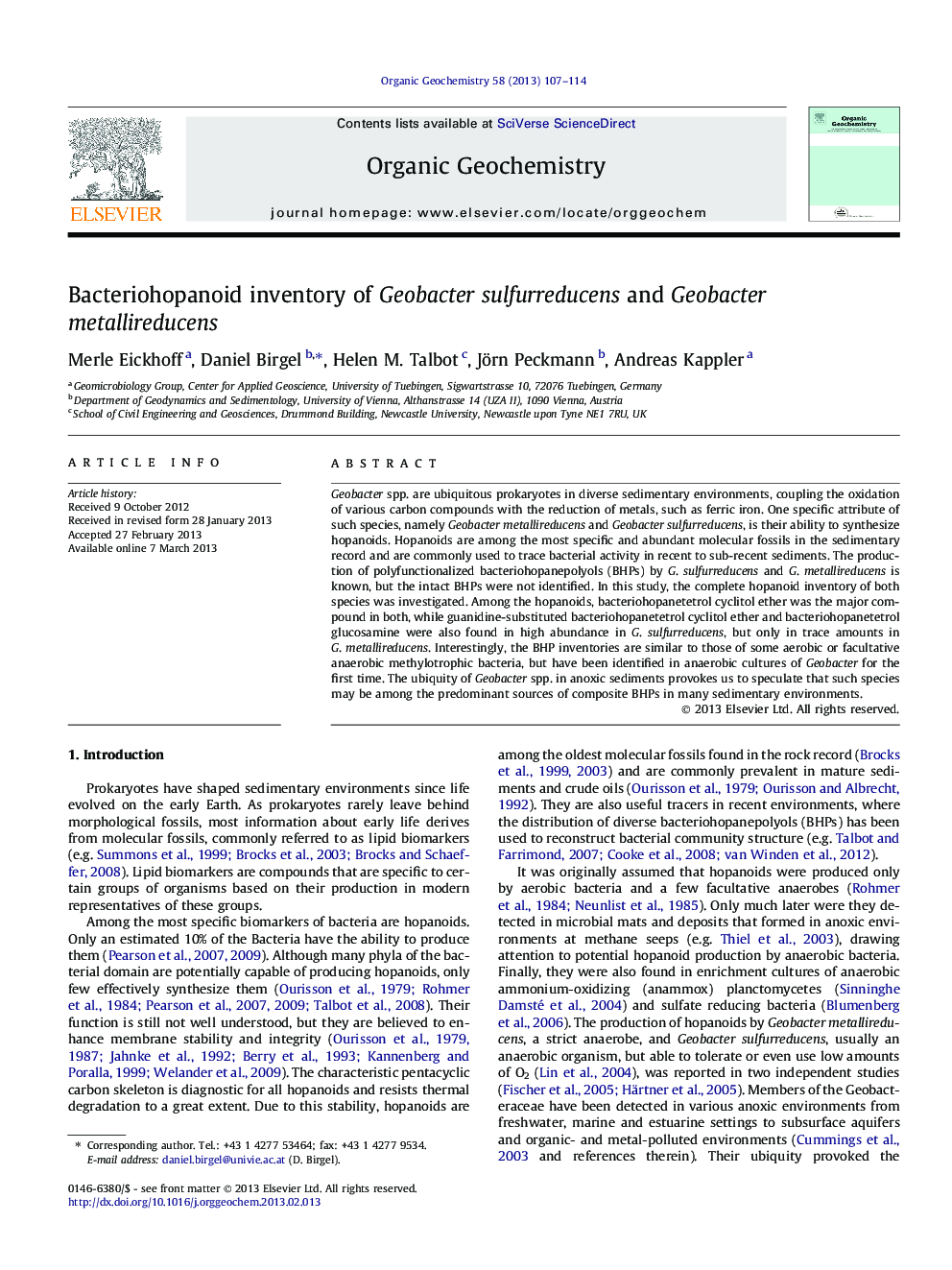| Article ID | Journal | Published Year | Pages | File Type |
|---|---|---|---|---|
| 5162735 | Organic Geochemistry | 2013 | 8 Pages |
Abstract
Geobacter spp. are ubiquitous prokaryotes in diverse sedimentary environments, coupling the oxidation of various carbon compounds with the reduction of metals, such as ferric iron. One specific attribute of such species, namely Geobacter metallireducens and Geobacter sulfurreducens, is their ability to synthesize hopanoids. Hopanoids are among the most specific and abundant molecular fossils in the sedimentary record and are commonly used to trace bacterial activity in recent to sub-recent sediments. The production of polyfunctionalized bacteriohopanepolyols (BHPs) by G. sulfurreducens and G. metallireducens is known, but the intact BHPs were not identified. In this study, the complete hopanoid inventory of both species was investigated. Among the hopanoids, bacteriohopanetetrol cyclitol ether was the major compound in both, while guanidine-substituted bacteriohopanetetrol cyclitol ether and bacteriohopanetetrol glucosamine were also found in high abundance in G. sulfurreducens, but only in trace amounts in G. metallireducens. Interestingly, the BHP inventories are similar to those of some aerobic or facultative anaerobic methylotrophic bacteria, but have been identified in anaerobic cultures of Geobacter for the first time. The ubiquity of Geobacter spp. in anoxic sediments provokes us to speculate that such species may be among the predominant sources of composite BHPs in many sedimentary environments.
Related Topics
Physical Sciences and Engineering
Chemistry
Organic Chemistry
Authors
Merle Eickhoff, Daniel Birgel, Helen M. Talbot, Jörn Peckmann, Andreas Kappler,
